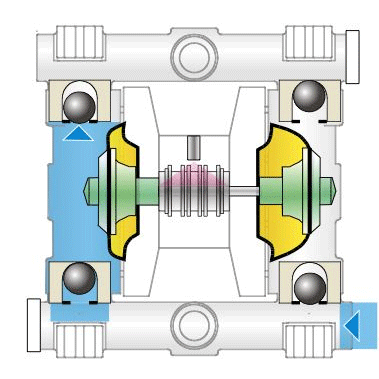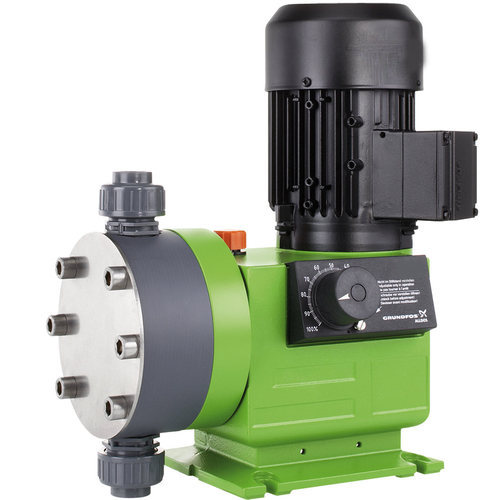Diafgram pump
The diaphragm pumps are similar to the piston and plunger pumps, except that the reciprocating movement of the pump causes the diaphragm to flex back and forth, which in turn causes the fluid to flow in and out of the pump fluid terminals. Like all reciprocating pumps, the diaphragm pump requires one-way valves in the inlet and outlet ducts. The diaphragm is usually made of elastomeric material to provide adequate flexibility. The diaphragm is mechanically attached to or detached from the diaphragm and moved by a reservoir of hydraulic fluid, often controlled by a contour plate . To be.

One of the most common applications for diaphragm pumps (of the type described above) is measurement applications. The metering pumps in Europe, called dosing pumps, have relatively low flow rates, usually measured in gallons or liters per hour. These pumps are very accurate in measuring the flow and the diaphragm also allows the pump to leak and adapt to a variety of liquids. A diaphragm metering pump with hydraulic actuator has adjustable motion for different flow rates. Solonoid metering pump is another type of diaphragm pump used in light metering applications.

This type of diaphragm pump uses an electronic signal for the magnetic movement of the plunger / aperture assembly. Process services use much larger specimens of hydraulic actuator diaphragm pumps. The ability to produce high pressures and no need for a leak makes them a viable alternative to specific services. These pumps, with metal diaphragms and Remote Heads , can pump liquids up to F 900 . Pneumatic double diaphragm pump is another type of diaphragm pump . In this type of pump design, compressed air enters the air chamber behind one of the diaphragms, compresses the diaphragm, and forces air into the outlet valve at the other end.

The second diaphragm is simultaneously drawn inward by the connecting rod between the two diaphragms, which initiates the suction phase at which the diaphragm enters the fluid through the one-way inlet valve in the pump. Then, a Volvo shuttle shifts the air distribution, sending the air to the other chambers to reverse the two diaphragms.
A distinctive feature of the different types of diaphragm pumps compared to piston or plunger pumps is that they lack seating and do not require packing or mechanical flooding. Pneumatic diaphragm pumps are capable of operating in the presence of large solids, corrosive and corrosive materials, which is another advantage. These pumps are self-propelled and can operate dry. At the same time, their versatility also makes them a good choice for pumping wastewater, acids and food. The disadvantage of a pneumatic diaphragm pump is that it needs air to work (of course, where there is compressed air but no electricity, this can be an advantage), there are limitations in the flow and pressure, pressure fluctuations They produce relatively large and are quite inefficient in terms of energy consumption.

Another type of diaphragm pump is the lateral plate pump. In this type of rotary plate pump mounted off-center on the axis, it causes the reciprocating movement of several pistons or diaphragms. The benefits of this pump include the ability to provide high pressure, no-seal pumping, self-start and dry operation capability if the inlet line is blocked. Its disadvantages include relatively low flow rate and high moving parts.